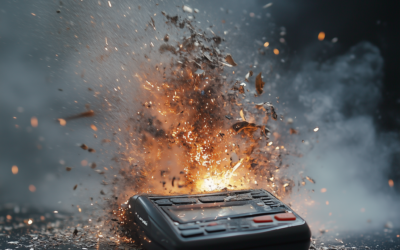Total Ebola Cases 3,000+, Deaths 1500+: Is This The Whole Story?
The World Health Organization (WHO) is worried that the extent of the Ebola virus disease (Ebola) outbreaks in Guinea, Liberia, Nigeria and Sierra Leone is underestimated by the official statistics. How can this be?
Health care authorities now believe that there are far more cases of the disease than previously thought. There are several reasons why current official estimates may not provide an accurate portrayal of the situation.
Fear
Many people in these countries fear the hospital and believe that care in an isolation ward will lead to further infection and certain death. As a result, people may outright deny that they or their loved ones may have Ebola. Some people are also unlikely to report a suspected case of Ebola due to the stigma and social rejection that accompanies a diagnosis of Ebola.
Misinformation
Because there is no cure, many families think that their sick loved ones will almost certainly die, even though there is roughly a 50–60% chance of survival. So, they tend to hide their infected loved ones at home with the belief that they will be more comfortable dying there than in a hospital.
Many people in rural villages dispose of corpses without notifying health officials or conducting investigations into the deaths. They have an innate mistrust of health authorities, who will take the corpse away from the family in order to cremate it or bury it in a safe manner. This is in stark opposition to the local cultural funeral practices. In some instances, epidemiologists have travelled to villages and counted the number of fresh graves as a crude indicator of suspected cases.
Further Complications
The outbreak is spreading very quickly and international support of staff, supplies, and equipment cannot keep up. Medical staff who must work closely with Ebola patients are also afraid of contracting the disease themselves, and many have fled. There are not enough staff to follow up with Ebola patient’s contacts in order to track the outbreak. WHO estimates that 10 percent of an Ebola patient’s contacts will go on to develop symptoms of Ebola. Many of these contacts cannot be investigated due to a lack of staff.
Hospitals and other health care facilities are overwhelmed with Ebola patients and many general clinics have been closed. In some areas, most notably Monrovia, virtually all health services have shut down. This lack of access to routine health care leads to even more fear.
In Liberia, newly opened treatment facilities are immediately filled with new Ebola patients, suggesting that there are many patients in the community that are not identified by the current surveillance system. For example, in Monrovia, Liberia’s capital, an Ebola treatment centre with 20 beds opened during the week of August 15, 2014, and was immediately overwhelmed with more than 70 patients.
There are also areas known as “shadow-zones”, where Ebola cases and deaths are suspected but cannot be adequately counted or investigated due to mistrust of health officials or a lack of adequate transportation and staff.
The intense fear within the community and breakdown of access to health care also contributes to looting and mobbing incidents, which leads to both further spread of the disease and further complications for surveillance of the suspected cases. For example, a temporary holding facility was specifically set up for Ebola patients in the West Point township of Liberia. However, many members of the local community believed that this facility was actually a clinic for general health care. Rumours spread through nearby communities that have little to no access to health care. Families from these other communities brought loved ones with various illnesses to the facility, where they came in contact with suspected Ebola patients. The West Point community resented the presence of patients who were not from the West Point township, leading to riots, looting, and the spread of potentially contaminated materials.
How bad is it?
The full extent of the outbreak is still unknown, but WHO epidemiologists are working together with Medecins Sans Frontiers (Doctors without Borders) and the US Centers for Disease Control and Prevention to find ways of generating more accurate estimates of the number of Ebola cases. Some authorities estimate that the epidemic will not be brought under control before the patient count reaches 20,000 people over the next year.



